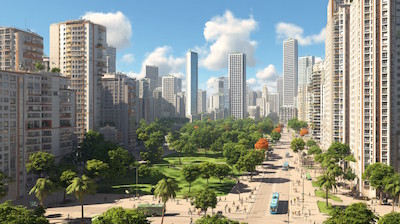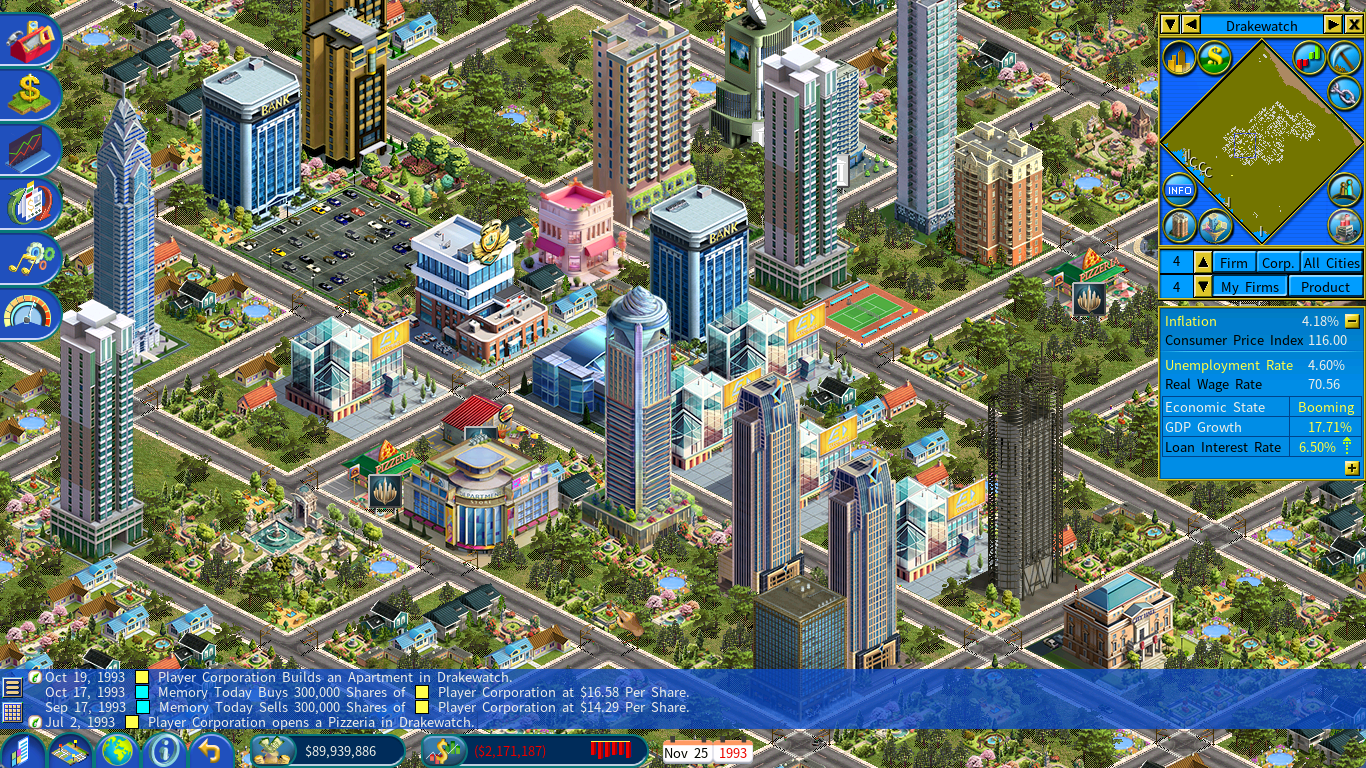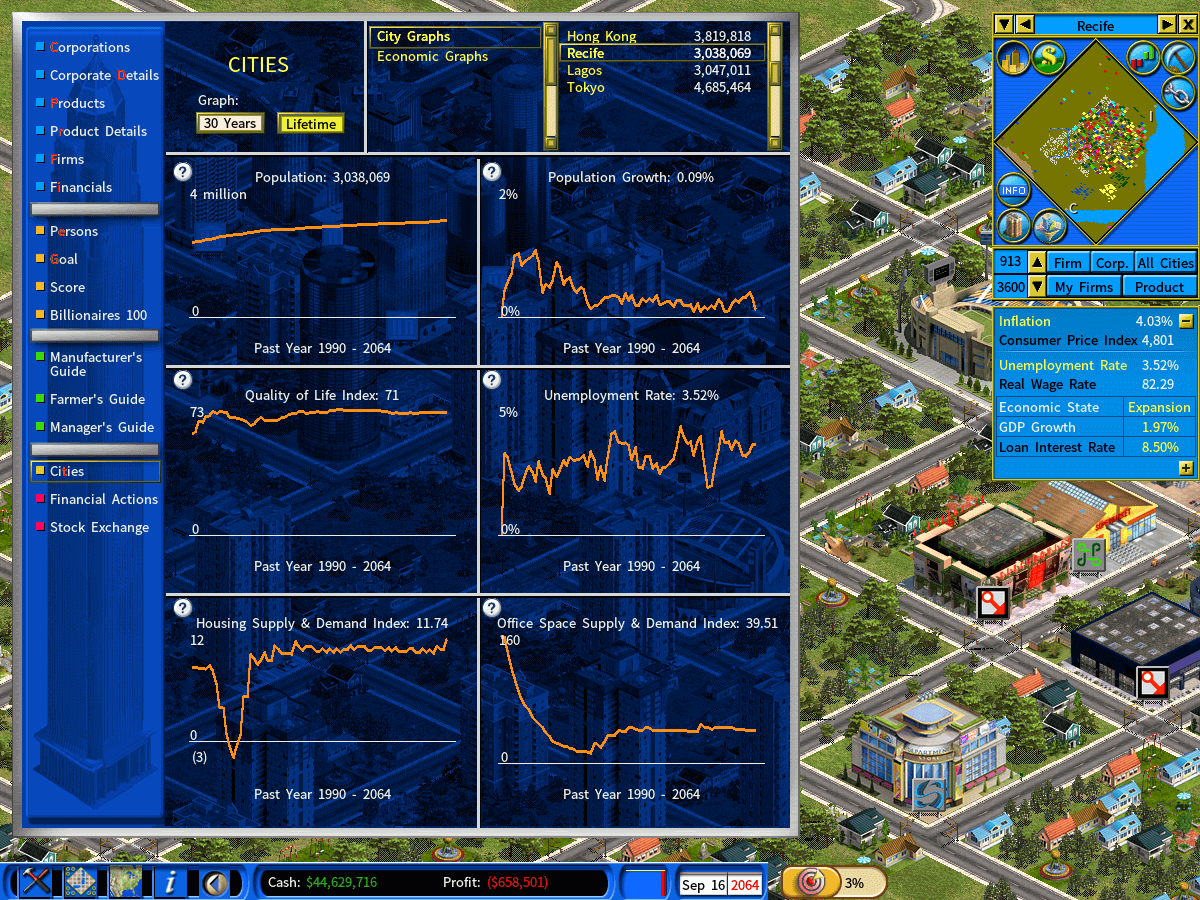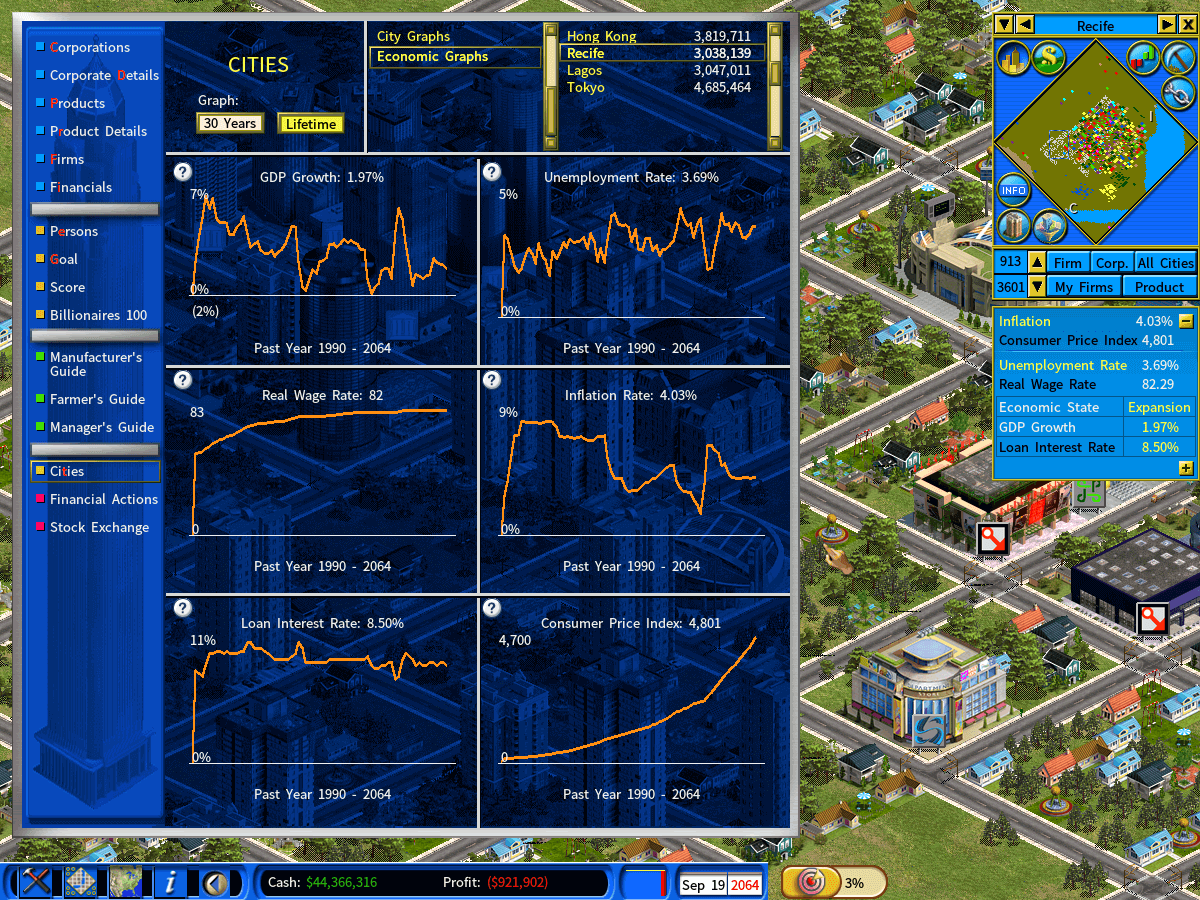City Dynamics
City Dynamics is a feature in Capitalism Lab that simulates the population growth of a city realistically. The city’s population growth is influenced by factors such as housing supply and demand, unemployment rate, and quality of living.
A city’s population growth is supported by:
o Low unemployment rate
o Apartment buildings with good access to community and sports facilities, providing housing to new immigrants.
o Quality of living of the city. People enjoy their lives better when they live in apartments with good access to community and sports facilities, a green environment and good shopping convenience.

A city’s population stops growing or grows very slowly under the following circumstances:
o When the housing supply is considerably lower than housing demand, people will have problems finding houses and they will stop migrating into the city, and some people may emigrate from the city.
o When the unemployment rate is high and people are having a hard time finding jobs, they may move out from the city.
Strategy for Population Growth
You can strategically build community and sport facilities as well as retail stores around the residential areas to improve people’s quality of living, which will promote population growth and will eventually benefit your products’ sales thanks to a larger population of consumers.
The new buildings built by the player companies and other AI companies will shape the development of the city. You will see increases in land values and traffic volumes in areas with new buildings.
Also see:
The Evolution of Shanghai from 1990 to 2010 – showing a scenario where the player acquires a large piece of land and develops a new residential area from the ground up. The improved quality of living of the city contributes to its population growth during the period.

The Cities report displays an array of useful graphs about the city.


